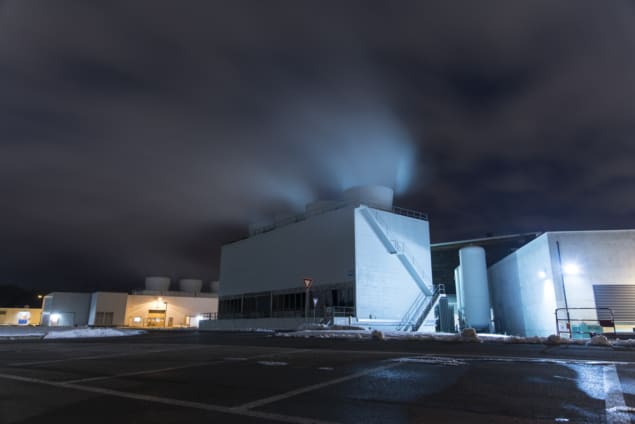
Greenhouse-gas emissions emitted by the CERN particle-physics lab near Geneva in 2018 were 223 800 tonnes of carbon-dioxide equivalent – similar to the emissions from a large cruise liner. That is according to the lab’s first public Environment Report that details the status of CERN’s environmental footprint and outlines some objectives to reduce it in the coming years. The report finds that three quarters of these emissions came from the fluorinated gases used for particle detection and cooling of the particle detectors.
Covering the years 2017 and 2018, the report underlines the scale of the challenge that CERN faces to reduce its emissions. “It has provoked debate and increased the environmental awareness of all the people who work here as well as our user community, and made us think hard about what we do now and how we design the next generation of accelerators,” says Frédérick Bordry, CERN director for accelerators and technology.
It’s really positive that CERN staff are being transparent about their impacts and that they have set themselves an absolute reduction in emissions target, as opposed to a greenwash-style intensity metric
John Barrett
The report covers everything from noise and biodiversity to water use and radiation. Comparing all these aspects, reducing the use of fluorinated gases will have the greatest positive impact and the report sets out a path to do this such as repairing gas leaks in the LHC, optimizing gas re-circulation systems. The ultimate goal is to replace fluorinated gases in the detector cooling systems with carbon dioxide, whose global warming potential is a few thousand times lower. “When we built the Large Hadron Collider we didn’t appreciate the global-warming potential of these gases; our main concern was the ozone hole,” says Bordry. The facility has set itself an objective of reducing its direct greenhouse gas emissions by 28% by the end of 2024.

Leading by example: going green in the lab
The report also sets out plans for tackling CERN’s indirect greenhouse emissions – those due to its small-city-sized appetite for electricity. “We are implementing energy-recovery systems at the LHC, and pioneering the use of superconductivity on a large scale, which could improve the efficiency of electricity distribution networks,” says Bordry. But until the LHC’s successor arrives – maybe in the 2040s or 2050s – there is a limit to how much CERN can reduce its environmental footprint and some will question whether probing the mysteries of the universe can justify such significant greenhouse emissions.
“It’s really positive that CERN staff are being transparent about their impacts and that they have set themselves an absolute reduction in emissions target, as opposed to a greenwash-style intensity metric,” says John Barrett, from the Sustainability Research Institute at the University of Leeds. “The advancement of scientific understanding is clearly important and you don’t get much bigger than CERN. Personally, I would prefer to spend our carbon budget on CERN than short high-impact flights for a drunken weekend in Prague.”
